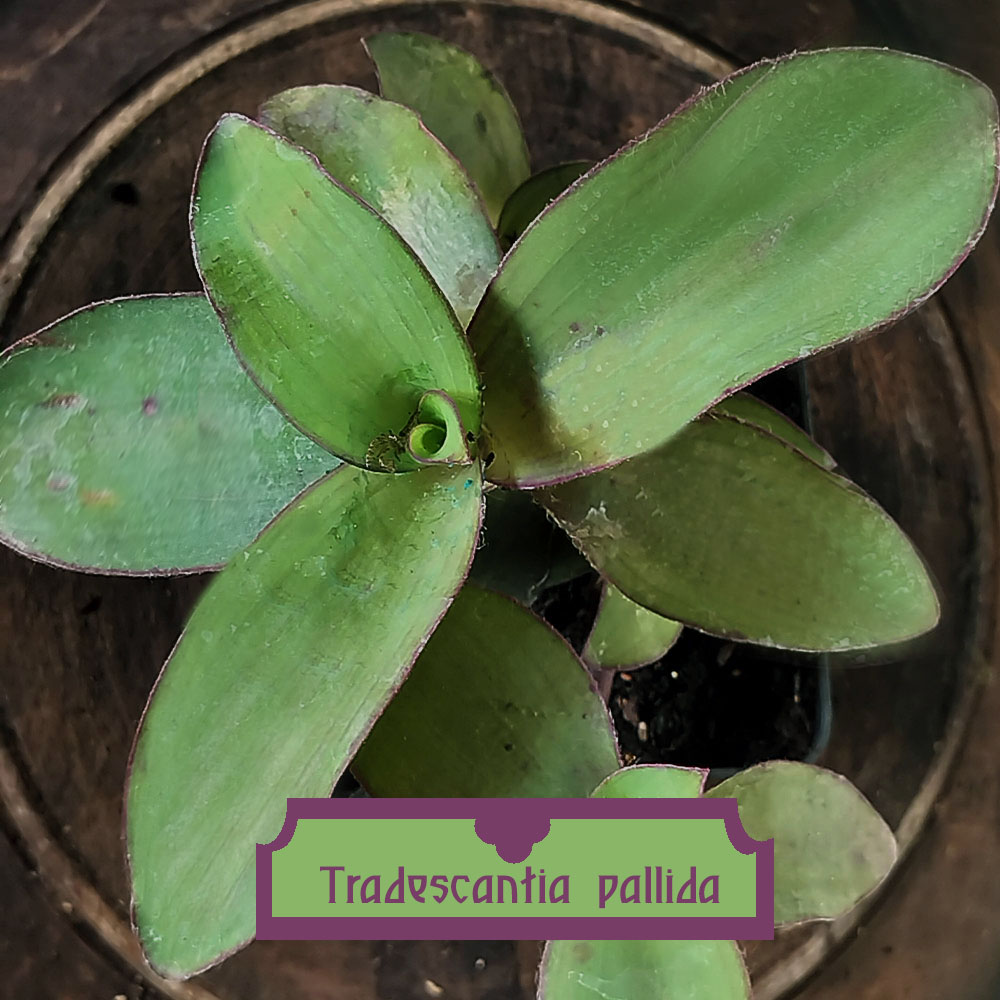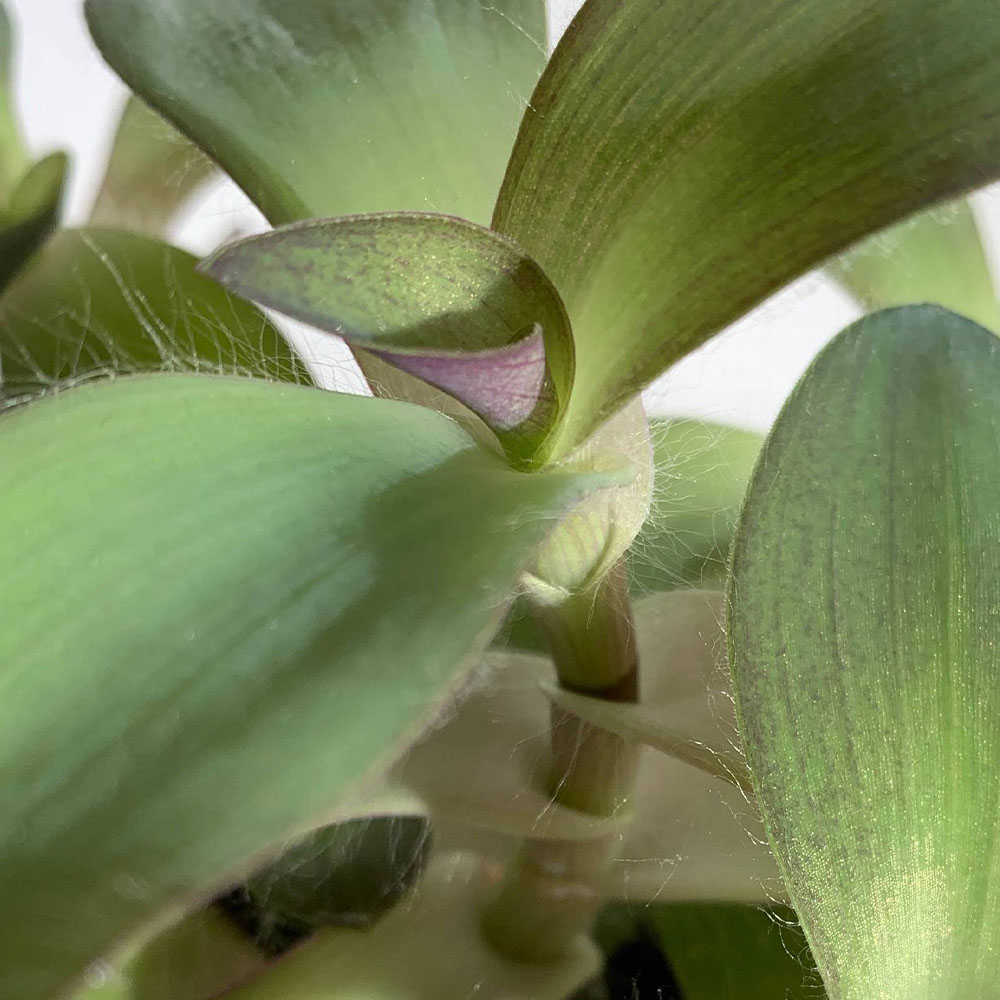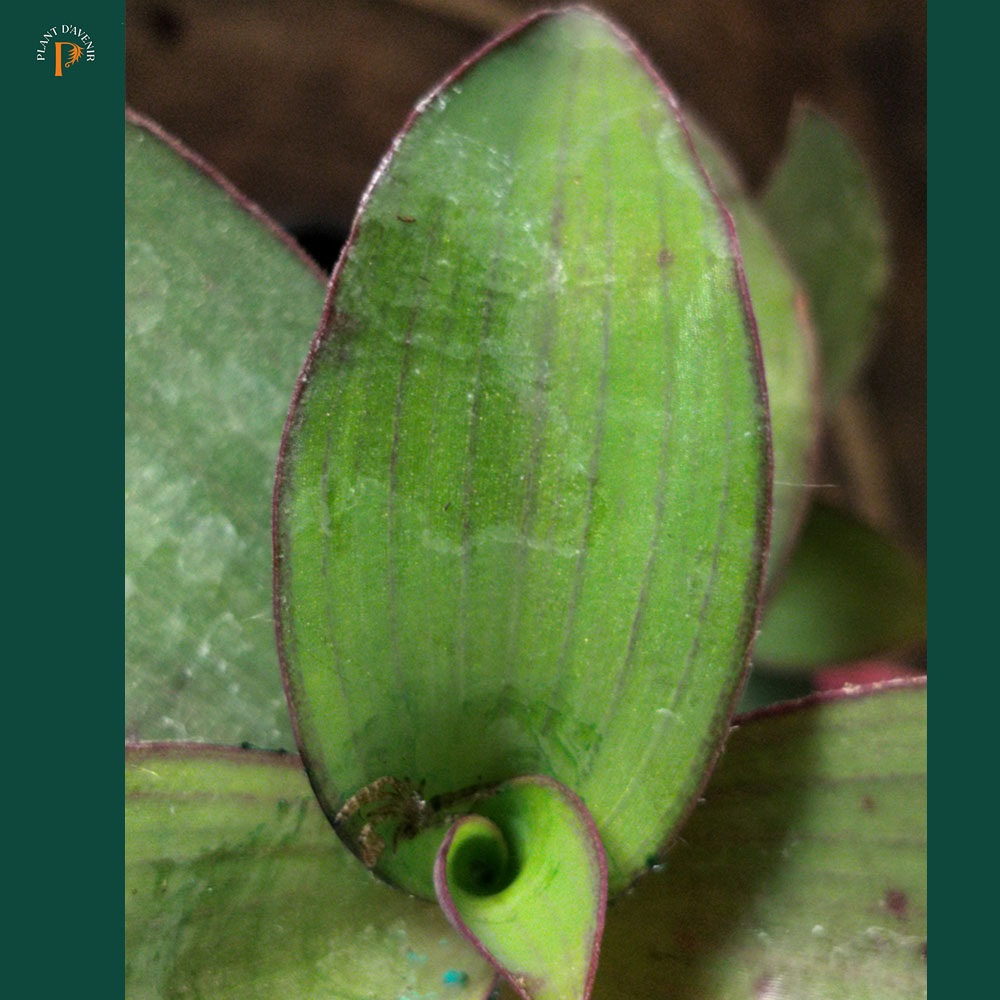No products in the cart.
Tradescantia pallida
Pale mauve-green leaves and stems edged with a fine purple line
Rated 0 out of 5
0 customer reviews
4,90 € – 8,00 €Price range: 4,90 € through 8,00 €
SKU: N/A
Category: Better Indoors, Bouquet

Tradescantia pallida
4,90 € – 8,00 €Price range: 4,90 € through 8,00 €
Tradescantia pallida has pale mauve-green leaves and stems edged with a fine purple line that contrasts beautifully with the bright pink flowers that appear in summer.
This cultivar has been judged exceptionally effective at improving indoor air quality by filtering out volatile organic compounds, a class of common pollutants and respiratory irritants, an effect known as phytoremediation.
It is very resistant to dry conditions and cold (as long as there is daily thawing)
It is distinguished by vivid purple, elongated and slightly pointed leaves—generally a glaucous green, turning more vividly purple in full sunlight and times of drought
👨🌾GARDENING TIPS👨🌾:
-
- The glaucous green leaves will turn a vivid purple in bright light
- ✂️ Regular trimming maintains compact growth and encourages branching.
- Divide the bunch every 2 years as the growth is very vigorous and dense
- Easily propagated from cuttings year-round; rooting in water is highly effective > check out our step by step article on How to do Tradescantia cuttings. (this one is perfect for beginners)
- Tradescantia pallida works beautifully in mixed containers, as groundcover in rockeries, or cascading from raised planters – mix with Lavandula stoechas or Achillea Red Velvet for cute indoor arrangements
- 🏠 Indoors – the foliage will remain the same throughout the winter season – and you may even get some winter blooming!
- 🌲 Outdoors – this variety is very frost hardy – watch her shift colors and remind you to bring in the other Tradescantias that you have on your porch!
Learn more about the Tradescantia family:
The Tales & The Botany: Tradescantia pallida
Tradescantia pallida has been judged exceptionally effective at improving indoor air quality by filtering out volatile organic compounds, a class of common pollutants and respiratory irritants, an effect known as phytoremediation.
This cultivar is the Pallida Blue Sue , though the distinctions with Green Moon are minimal.
And since they are not particularly frost tolerant, keeping them inside may be best!
Pallida means ‘pale’ in Latin so it’s right there in the name
Tradescantia, commonly called spiderwort, is a genus in the Commelinaceae family, comprising around 75–90 species of perennial herbs.
Native to the Americas, especially Central and South America, these plants are prized for their vivid foliage and delicate, three-petaled flowers, making them favorites for borders, rockeries, and indoor displays.
The genus was named by John Tradescant the Elder, a 17th-century English botanist and gardener who introduced many North American plants to Europe.
In fact, Tradescantia was one of the first North American plants introduced to European gardens in the 17th century, and some cultivars are now so widespread they are considered naturalized in many temperate regions worldwide.
🌸Floral Morphology: Tradescantia pallida
Tradescantia pallida flowers are small, actinomorphic, and trimerous, with three light pink petals.
Flowers are borne in clusters (cymes) at the tips of stems and are short-lived, often opening for a single day but produced in succession to provide extended bloom.
Leaves are alternate, simple, and often lanceolate, with a succulent or slightly fleshy texture in some species. Many cultivars have variegated or purple-tinged foliage, adding ornamental value even when the plant is not flowering.
🍃Reproductive Biology
Tradescantia species are hermaphroditic, capable of self-pollination, though insects such as bees and hoverflies are the primary pollinators.
Fruits are capsular, splitting into three sections containing small seeds.
Some species also propagate readily via stem cuttings, which root easily in soil or water, making Tradescantia a favorite for vegetative propagation and indoor plant enthusiasts.
🌍Ecology & Adaptations
Tradescantia pallida var purpurea thrives in temperate to subtropical environments, so in France we’re limited to using them in:
-
- Container and indoor gardening: This is a perfect variety for container/indoor gardening as it trails, making it ideal for hanging baskets.
Key adaptations include:
-
-
Rapid vegetative growth.
-
Easy propagation
-
Moderate drought tolerance
-
Pest resilience
-
Foliage interest
-
Other Names
Setcreasea pallida
Purple secretia
Purple queen
Origin:
Eastern Mexico
| Weight | 0,5 kg |
|---|---|
| Container Size | 9×9 cm, 2L |
| Flowering | May/June/July |
| Soil | Dry/Rocky |
| Exposure | Sun |
| Frost Tolerance | -5°C |
| Size | Height: 0.5 |
Reviews
0
Rated 0 out of 5
0 customer reviews
5
0
4
0
3
0
2
0
1
0
Only logged in customers who have purchased this product may leave a review.
Related Products
Tradescantia zebrina
A zebra-patterned indoor creeping plant
A zebra-patterned indoor creeping plant
Rated 0 out of 5
Tradescantia pallida var purpurea
A tender perennial known for its striking purple foliage.
A tender perennial known for its striking purple foliage.
Rated 0 out of 5
Billbergia nutans
A bromeliad featuring a three colored, striped flower
A bromeliad featuring a three colored, striped flower
Rated 0 out of 5
Crassula muscosa
A succulent with thin, spiralling square leaves
A succulent with thin, spiralling square leaves
Rated 0 out of 5
Crassula tetragona
A succulent with dark green, sword-shaped leaves.
A succulent with dark green, sword-shaped leaves.
Rated 0 out of 5
Tradescantia Green Hill
Dark green and purple little leaves
Dark green and purple little leaves
Rated 0 out of 5
Tradescantia blossfeldiana Red Hill
Darker foliage, fuzzy underleaves and a powerful sun and drought resistance.
Darker foliage, fuzzy underleaves and a powerful sun and drought resistance.
Rated 0 out of 5
Sedum morganianum ‘Burrito’
A lovely succulent that develops thick trailing stems covered with overlapping, plump, blue-green leaves as it grows.
A lovely succulent that develops thick trailing stems covered with overlapping, plump, blue-green leaves as it grows.
Rated 0 out of 5
Kalanchoe laetivirens – Aranto
A cultivar with larger all-green leaves and thousands of pups along their broad edges.
A cultivar with larger all-green leaves and thousands of pups along their broad edges.
Rated 0 out of 5
Tradescantia Blushing Bride
Gorgeous blushes of pink and white that appear in the coldest nights.
Gorgeous blushes of pink and white that appear in the coldest nights.
Rated 0 out of 5
Haworthiopsis attenuata
An evergreen succulent plant with tapered, white-striped leaves arranged in delicate rosettes
An evergreen succulent plant with tapered, white-striped leaves arranged in delicate rosettes
Rated 0 out of 5
Aloe vera
A succulent known for the unctuous gel hidden in its leaves
A succulent known for the unctuous gel hidden in its leaves
Rated 0 out of 5
Tradescantia sillamontana Variegata
A fuzzy, bright yellow, drought-resistant, indoor plant
A fuzzy, bright yellow, drought-resistant, indoor plant
Rated 0 out of 5
Kalanchoe pumila
A silver succulent that forms a small, clumping bush.
A silver succulent that forms a small, clumping bush.
Rated 0 out of 5
Crassula perforata
A slow-growing succulent with graphic rambling stems
A slow-growing succulent with graphic rambling stems
Rated 0 out of 5
Sedum rupestre
A blue grey succulent in the Crassulae family with stiff foliage resembling little spruce trees.
A blue grey succulent in the Crassulae family with stiff foliage resembling little spruce trees.
Rated 0 out of 5
Tradescantia fluminensis Yellow Hill
A fast-growing, sprawling tropical perennial with random, mottled yellow and green variegation.
A fast-growing, sprawling tropical perennial with random, mottled yellow and green variegation.
Rated 0 out of 5
Tradescantia purpurea Variegata
A variegated version of the deep purple variety of Tradescantia.
A variegated version of the deep purple variety of Tradescantia.
Rated 0 out of 5
recent view product
Sedum spectabile Septemberglut
A species of flowering plant in the stonecrop family – drought tolerant, with vibrant pink flowers and a spectacularly long flowering period.
A species of flowering plant in the stonecrop family – drought tolerant, with vibrant pink flowers and a spectacularly long flowering period.
Rated 0 out of 5
Glechoma hederacea
A sweet smelling ground cover, producing little blue flowers all summer long.
A sweet smelling ground cover, producing little blue flowers all summer long.
Rated 0 out of 5
Nepeta stewartiana
A rare variety of speckled catnip
A rare variety of speckled catnip
Rated 0 out of 5
Graptopetalum paraguayense
A succulent with porcelain color-shifting leaves and an unusual hardiness.
A succulent with porcelain color-shifting leaves and an unusual hardiness.
Rated 0 out of 5
Rumex sanguineus
A striking perennial vegetable, known for its tangy spinach taste
A striking perennial vegetable, known for its tangy spinach taste
Rated 0 out of 5


















































There are no reviews yet.